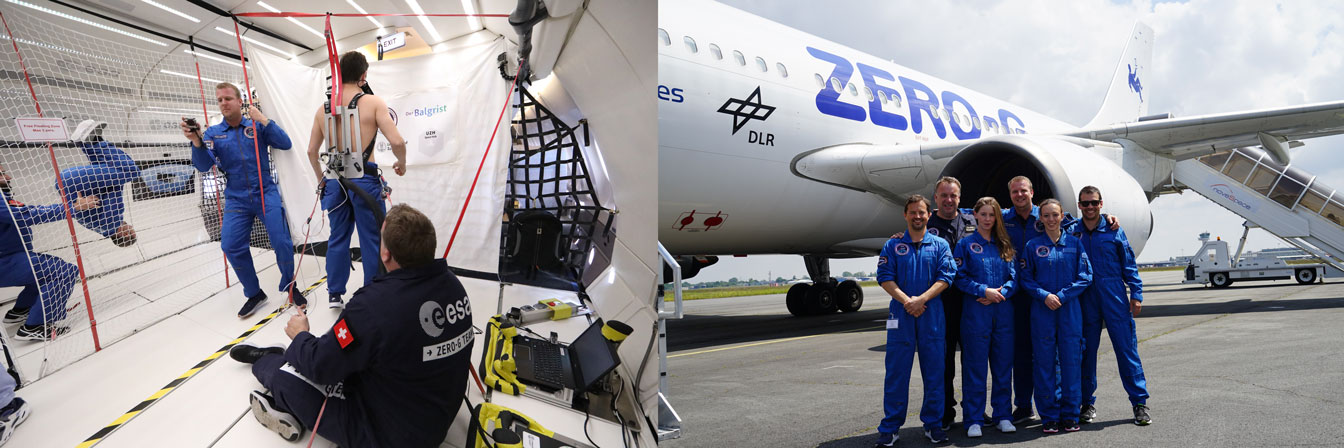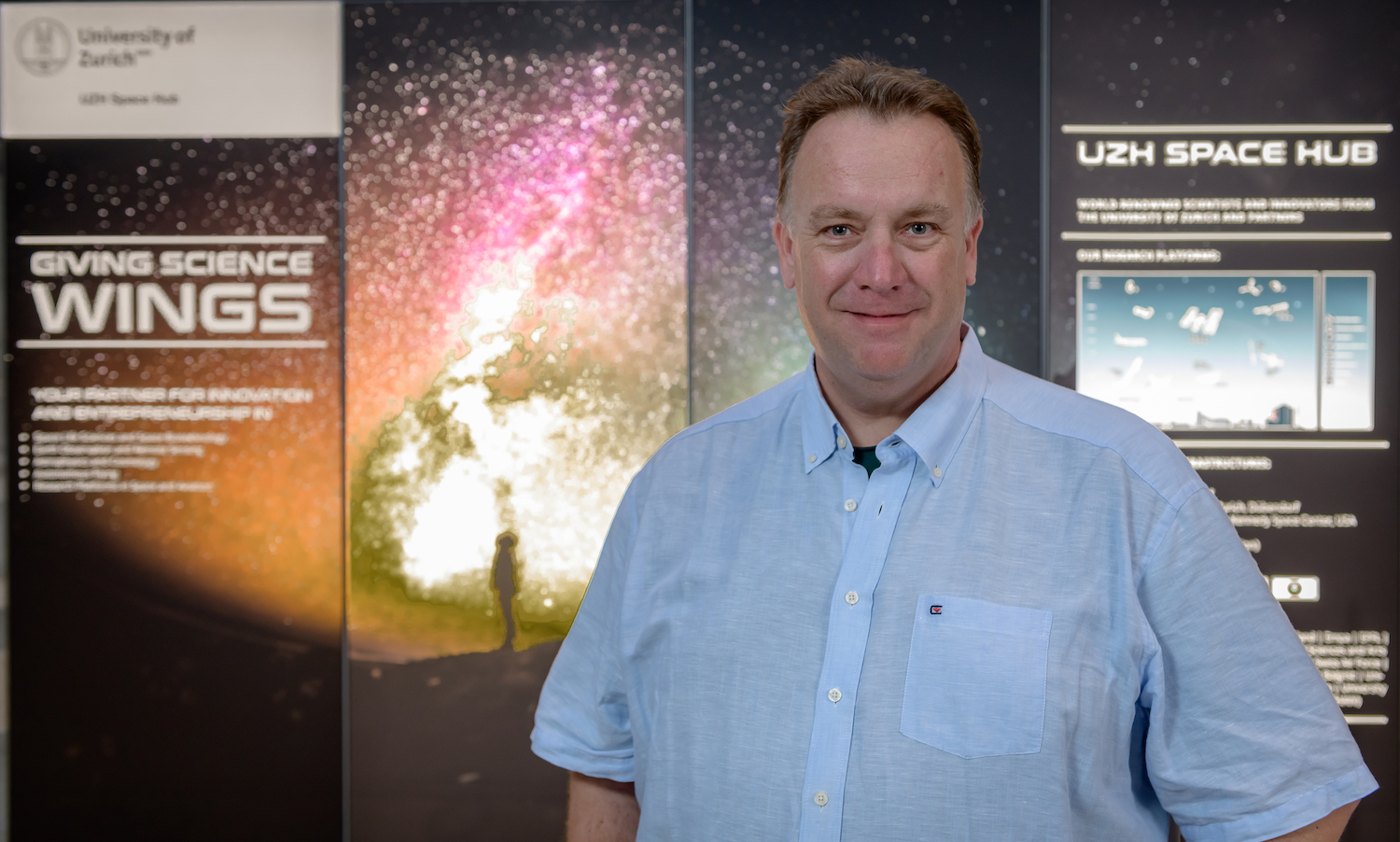Spinal Health
Enhancing Spinal Health in Space: The Pioneering Reseach of the Spinal Health Research Group

Introduction
The Spinal Health Research Group (SHRG), located within the UZH Space Hub at the University of Zurich, is dedicated to conducting cutting-edge micro- and hypergravity research to improve spinal health. The group's primary focus is investigating the mechanisms underlying back pain and the increased risk of intervertebral disc (IVD) herniation among astronauts during and following their long-term missions in space.
Background
Low back pain during spaceflight has been a puzzling occurrence that affects astronauts' performance. Additionally, long-term space missions have been linked to a higher risk of IVD herniation. The common factor in these spinal health impairments may lie in the effects of changing gravity on spinal motor control. The complexity of spinal motor control, involving both active (muscles and nervous system) and passive (joints and ligaments) structures, makes it an essential area of research.
Research Focus
The ongoing study, led by Dr. Jaap Swanenburg and Prof. Dr. Marcel Egli seeks to unveil the connection between lower back pain, astronauts, and weightlessness. To achieve this, meticulous experiments are conducted on test subjects during differen gravity conditions on parabolic flights. During these tests spinal stiffness, spinal couverture and muscle activity are measured under different gravity conditions. Additionally, spinal stiffness, dynamic spinal couverture, and IVD height measurements are performed on astronauts before and after space missions and allow to analyze movement patterns and motor control of the spine after being exposed to microgravity for a long time. The ultimate goal is to gain insight into the impact of space missions on lower back pain development and the effects of microgravity on IVDs.
Current Progress
Since fall 2021, six astronauts have participated in this captivating expedition, and their data is being analyzed. The research is set to continue with another group of six astronauts who will be recruited and measured until 2025. Starting in 2016, data could be recorded during two Swiss Parabolic Flights and subsequent five ESA Parabolic Flight Campaigns, involving 420 parabolas, alongside ground-based experiments. We are currently looking forward to the 83rd ESA Parabolic Flight Campaing in November 2023.
Research Team
The SHRG is composed of Dr. Jaap Swanenburg, Prof. Dr. Marcel Egli, and Dr. Anita Meinke. Their expertise covers diverse areas of specialization, including spinal stabilization in micro- and hypergravity, lumbar and cervical back pain mechanisms, and prevention and rehabilitation for improving spinal motor control.
Relevance and Importance
The investigations into the effects of changing gravity and axial load on spinal health aim to improve the understanding of spinal stabilization mechanisms. The research has potential implications for developing rehabilitation programs for astronauts returning to Earth or for individuals experiencing low back pain. By enhancing spine function during daily activities, these programs could significantly improve the overall spinal health of both astronauts and patients.
By understanding how changing gravity affects spinal motor control, this research may lead to breakthroughs in improving spine function for astronauts during their missions and after their return to Earth, as well as benefiting patients with low back pain here on Earth. As space exploration continues, this valuable knowledge will become even more crucial for future long-term space missions.
Contact:
Dr. Jaap Swanenburg
Institute of Anatomy
Cell Biology - Gravitational Biology and Biomechanics
University of Zürich
jaap.swanenburg@uzh.ch
